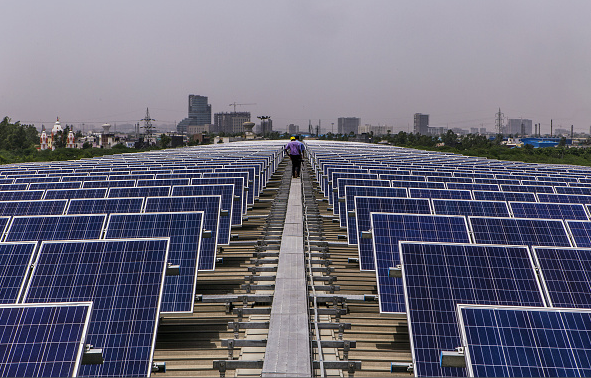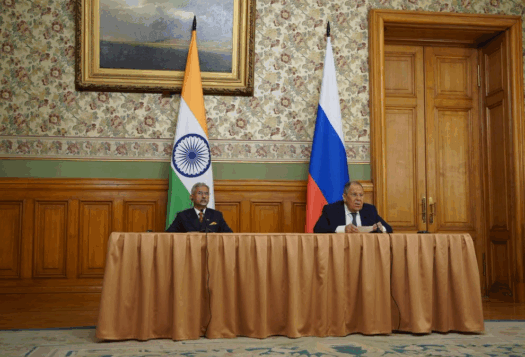
There is a rising demand for and consumption of energy in China and India. Both countries are increasingly relying on energy imports to meet their needs and are therefore competing against each other to procure energy supplies. This practice has reduced their bargaining power and allowed exporters to use price hikes and discriminatory pricing, thereby increasing costs. To address this, India and China have taken the initiatives of forming the oil buyers’ club (OBC) in 2018 and joint working group (JWG) on energy in 2019 to identify prospective areas of cooperation for the mutual benefit of both countries. However, the economic, political, and strategic challenges owing to the competition for the scarce resources, territorial disputes, and Chinese activities in the Indian Ocean have become barriers to cooperation.
When countries are in competition with one another, it is necessary that any attempt at cooperation is based on the rules and norms of international governance with a focus on the market forces of demand and supply. To this end, Indo-Chinese cooperation in renewable energy may present an alternative to dependence on conventional forms of energy, thereby promoting sustainable solutions to the rising energy demand and enhancing energy security.
Energy Trends: Rising Demand and Competition for the Same Resources
India and China show similar trends in energy demand, consumption, and imports. As of 2018, China was the world’s largest consumer of energy and accounted for 24 percent of global energy consumption and 34 percent of global energy demand growth. India, for its part, has the third largest energy demand in the world. The International Energy Agency (IEA) projects that by 2040, the average Chinese household will consume twice as much energy as it does today and India alone will grow to account for 30 percent of the entire global increase in energy demand. The import dependence of both countries has increased over the years and this trend is expected to hold. Moreover, as seen in the figure below, India and China both largely import their fuel from the same regions, primarily the Middle East and North Africa (MENA) followed by East Asia and the Pacific. Overall, China is importing more fuel than India in each region with the exception of MENA and North America, where the difference is slight. As such, India and China are vying for resources in the same regions, generating competition for scarce energy resources.
Present Status of India-China Cooperation
Competition between India and China over scarce energy resources has negatively affected both countries. It has led India and China to enter into bidding wars with each other, raising the costs of energy procurement. For instance, in Angola in 2005, China bid USD $2 billion for an oil field while India could only offer USD $600 million. Competition among energy importing countries gives an undue advantage to the energy exporters and allows them to hike prices and adopt discriminatory pricing to their benefit, thereby increasing costs and reducing efficiencies in the energy market. This was evident in the case of the Organization of Petroleum Exporting Countries (OPEC), which reportedly increased oil prices from USD $30 a barrel to $80 in 2018. Its practice of imposing an “Asian premium” on oil exports to Asia, as opposed to Europe, is a glaring example of discriminatory pricing.
Consequently, China and India have looked for ways to initiate cooperation and to increase their own bargaining power. The idea to form an OBC is one positive step towards this end. Originating at the International Energy Forum meeting in April 2018, the club would see cooperation between India and China, to eventually include Japan and South Korea. Though the OBC is only in the initial stages of conceptualization, it is expected to help China and India negotiate better prices with the OPEC, reduce the OPEC’s dominance in the global market for oil, and increase the bargaining power for major Asian consumers of oil. India and China have already formed a joint working group on energy to tackle crude oil volatility and partner in projects to avoid competition. The two countries further plan on developing prospective swap arrangements in the liquified natural gas (LNG) sector owing to the seasonal complementarities in demand wherein China’s peak LNG demand is in winter and India’s is in summer.
Impediments to Cooperation: Economic, Political and Strategic Concerns
Despite progress on some fronts, energy competition between India and China has seen only limited success in evolving a comprehensive model of cooperation. There have been instances where China has outmaneuvered India to secure its energy interests, most evident in the case of Kazakhstan, when in 2013 India’s ONGC lost the Kashgan oil field to China. Other political issues including the unresolved border issues in Aksai Chin and Arunachal Pradesh, China’s position on India’s entry into the Nuclear Suppliers Group, and the recent Doklam standoff in 2017 have been irritants in bilateral relations.
The energy dimension of China’s Belt and Road Initiative and its strategic implications have raised concerns for India’s energy security.
The energy dimension of China’s Belt and Road Initiative (BRI) and its strategic implications have raised concerns for India’s energy security. China is seeking to secure its existing maritime energy trading route by maintaining a significant presence in the sea and controlling Sea Lines of Communication (SLOCs) through port development activity in Gwadar in Pakistan, Hambantota in Sri Lanka, and Kyaukpyu in Myanmar. Approximately 95 percent of India’s total trade by volume, 80 percent of crude oil imports, and 60 percent of liquefied natural gas imports pass through the Indian Ocean, where China’s increasing presence has altered power dynamics in the region by creating economic and political dependencies as was visible in the case of Maldives and Sri Lanka. This has renewed India’s concerns around the “String of Pearls” theory and the security of its own SLOCs.
Making matters worse for India, its neighbors have largely accepted China’s economic presence to hedge against India’s regional dominance and play Beijing off India to their advantage. It also does not help that India has not been as proactive or capable as China in providing development assistance on connectivity and infrastructure projects. This was evident in the calling off of the Shwe gas pipeline project between Myanmar, Bangladesh, and India in 2005 due to the lack of convergence between the energy policies of India and Bangladesh as well as the conditions attached by Bangladesh to allow transit to the pipeline. Later in 2009, a gas pipeline project was initiated between China and Myanmar providing it access to Myanmar’s Shwe field.

Policy Recommendations: Need for a Framework Agreement and Cooperation in Renewables
China and India have emerged as the global leaders in scaling up their renewable energies — and huge investments are needed to align with the targets set under the Paris Agreement. India’s renewable sector is expected to offer investment opportunity of $30 billion every year for the next decade and beyond, and China can be a major investor.
Despite these challenges, India and China should continue to initiate and follow through on discussions about energy cooperation, especially regarding the prospects for an OBC. Though India-China OBC might increase their bargaining power and do away with discriminatory pricing, both New Delhi and Beijing should exercise caution to avoid cartelization. To achieve this, all those who are party to the OBC should agree to a clear method of calculating the price of oil that is reflective of the supply of and demand for oil globally.
To avoid future competition over the same increasingly scarce oil and natural gas resources, India and China may find it beneficial to supplement their cooperation on these energy resources with cooperation over renewable energy. China and India have emerged as the global leaders in scaling up their renewable energies, but huge investments remain needed in the sector to align with the targets set under the Paris Agreement. With India’s renewable energy sector expected to offer investment opportunities of USD $30 billion every year for the next decade and beyond, China is well-suited to become a major investor. The 4th India-China Strategic Economic Dialogue in 2016 has already seen the willingness of the two countries to cooperate over wind and solar energy. Collaboration over renewables will not only address the issue of energy security in both India and China, but will also aid in meeting both countries’ carbon emission targets and sustainable development goals.
While there will be bilateral tensions looming large over any prospects for cooperation, proponents of economic integration often highlight the role of economic integration in bringing peace and stability. In a scenario where India and China allow their challenges to take precedence, they will see only a limited success in meeting their demand for energy, ultimately threatening their own energy security.
***
Image 1: First News Live
Image 2: Bloomberg via Getty


